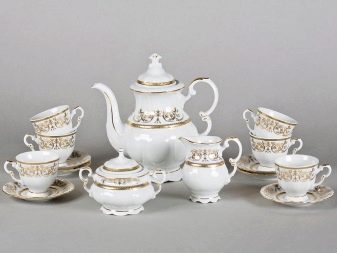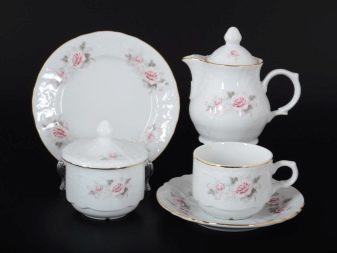Czech services
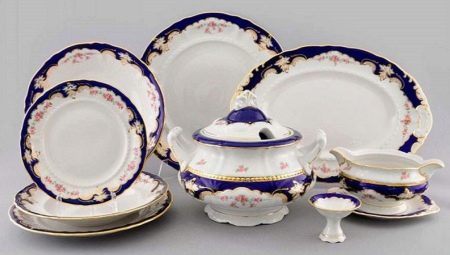
Czech sets are popular with connoisseurs and lovers of porcelain brands with a long history. Such dishes are distinguished by an original and recognizable appearance, high aesthetics, and a variety of design solutions. Table setting in the house with a Czech service has always been a sign of the family's material well-being and a confirmation of the solid social status of the owners of the house.
The line of Czech services includes different sets. Housewives wishing to have uniform and stylish porcelain dishes can choose table and coffee-tea sets made in the Czech Republic.
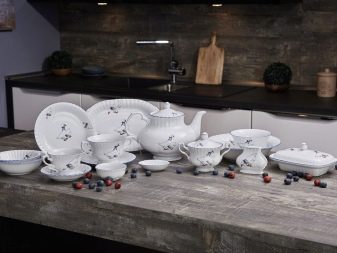
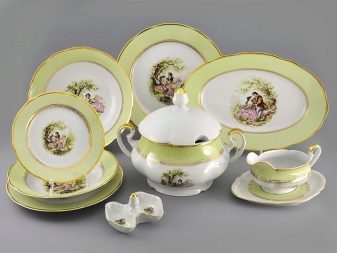
Peculiarities
The Czech service is globally recognizable tableware that has its own history and deep traditions. Czech producers present today a wide range of table and coffee-tea varieties with items designed to serve specific dishes. Like other counterparts, Czech services are becoming a family heirloom, passed down from generation to generation.
The production of porcelain tableware in the Czech Republic began in the early 1890s in the Karlovy Vary region. Here, not long before that, deposits of kaolin were discovered, which is used for the manufacture of these products. The Czech porcelain industry was based on the traditions of German craftsmen who pioneered the production of Czech porcelain. This is due to the fact that Karlovy Vary itself was part of Germany, and the "porcelain" factories of the Czech Republic were the property of German industrialists.
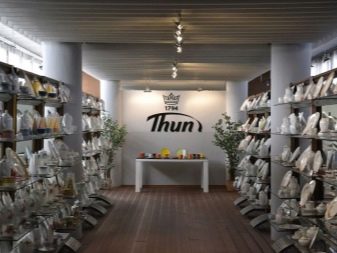

Due to the fact that Czech porcelain combined German quality and lower cost than porcelain from English and German manufacturers, it quickly gained popularity in Europe.
Czech sets combine the maximum number of items decorated in a single style. So, a classic tea set for 6 people includes 15 items:
- 6 cups;
- 6 saucers;
- kettle;
- sugar bowl;
- creamer.
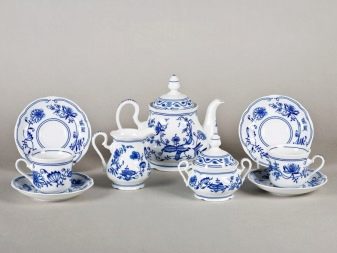
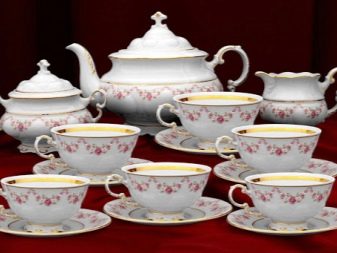
The classic dining set for 6 people includes 24 items, including:
- oval and round dishes;
- salad bowls;
- sauce bowl;
- a bowl for bones;
- oiler;
- salt shaker;
- lemongrass;
- napkin rings;
- tureen;
- plates of various types, etc.
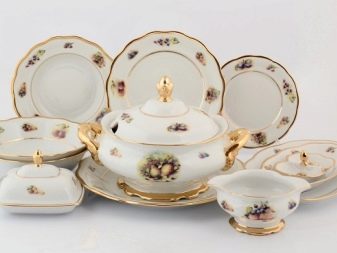
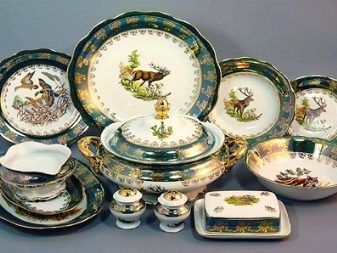
A distinctive feature of Czech services is the use of the same corporate subjects:
- floral ornaments;
- geese;
- biblical stories in the style of the Renaissance;
- "Green hunt".
Czech sets are characterized by a corporate color scheme:
- blue and white;
- pink with gilding;
- green.
The peculiarity of the material itself, which is mined in Karlovy Vary, is its pinkish tint. If the English, German and French services at the break are milky white, then a splinter of Czech will always have a pinkish tint. At the same time, the classic Czech material always has a milky white surface.
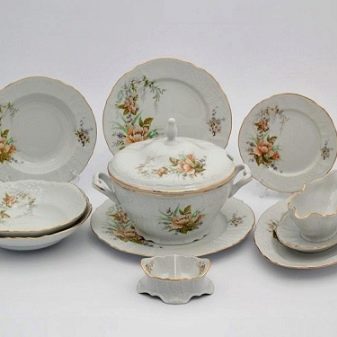
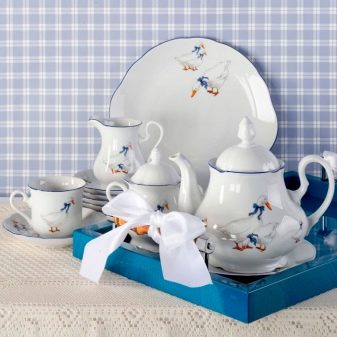
In the lines of Czech manufacturers of porcelain sets, there is a large selection of different tableware:
- restaurant;
- for home use;
- festive;
- for children's events;
- everyday;
- souvenir.
Distinctive features of all types of such material are ergonomics, exquisite design, durability, and practicality. Such a service is not afraid of high temperatures, it is distinguished by long-term operation and an acceptable price.
A large selection of classic shapes and decors makes Czech sets fashionable in any era.
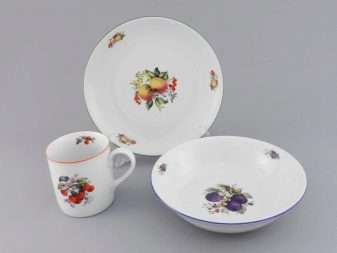
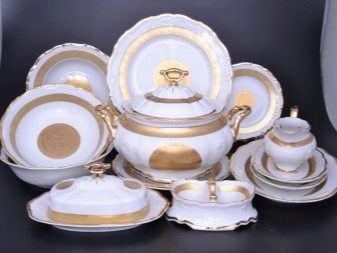
Most popular sets
During the Soviet era, when Czechoslovakia was part of the Eastern European bloc, European porcelain was represented by Czech products, which were considered an example of high applied art. Czech sets were never stale in Soviet stores. For the Soviet people, such dishes were considered a measure of prosperity, prestige and material well-being.
With geese
Sets of white porcelain dishes, decorated with Bohemian geese with blue bows on the neck with white polka dots, have always been in great demand at all times. The drawing used for decoration has been known for over 200 years. A characteristic feature of such dishes, designed in the style of Provence, is the absence of gilding or silvering. Milk porcelain is decorated only with the image of a goose and a thin blue border.
The Bohemian white goose, painted on the dishes, would have been chosen for a reason: it is the most popular poultry in the Czech Republic, which was actively bred in the country 200-300 years ago. Bohemian geese have become a trademark of this type of tableware.
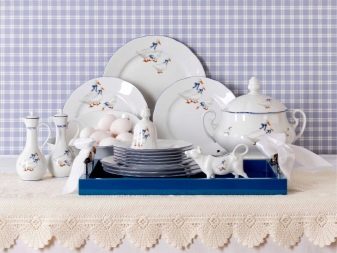
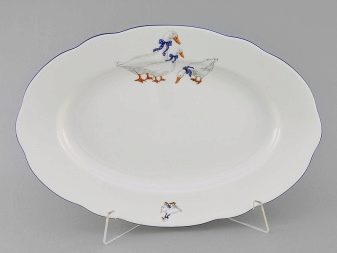
With roses
Sets, decorated with gilding and roses, of the Czech trade mark "Beranadotte" are always very popular. The collection of tableware and tea ware "Gray Rose" is relevant to this day in many countries of the world. Another option for crockery with roses is a unique pink material, decorated with gilding and the image of a tea rose.
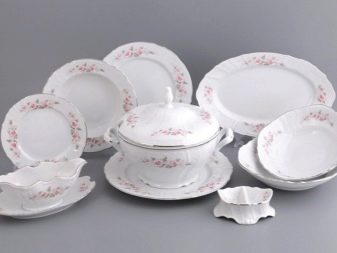
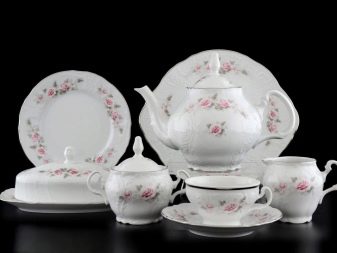
"Madonna"
Large dining sets made of porcelain, decorated with scenes of biblical themes in the style of the Renaissance, were a cult item in the USSR. Such sets were presented to newlyweds for weddings, for anniversaries of chiefs, for birthdays for wives, mothers and sisters. Biblical stories became widespread in the production of Czech porcelain thanks to the German and Austrian traditions, which were laid down at the stage of founding the famous "porcelain" factories in the Czech Republic.
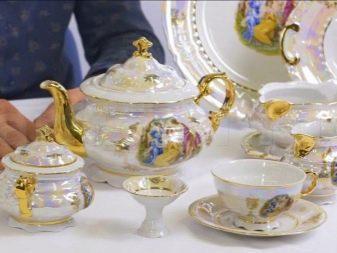
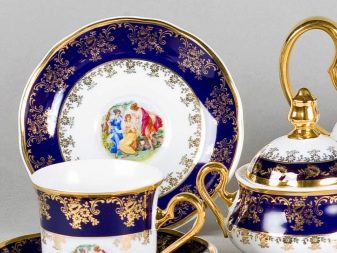
Manufacturers
Modern porcelain production in the Czech Republic is an organic mixture of the traditions of old enterprises, which to this day produce porcelain dishes, mainly according to German models. Vivid examples of such Czech porcelain are dinner and tea sets for 24 and 12 persons: from the baroque style of the Madonna series and with fruits. Czech manufacturers also have their own traditional styles that have become the hallmark of Czech porcelain:
- geese;
- porcelain of a pink shade, painted in a shard;
- patterned relief;
- "Wild flower".
Crockery of Czech manufacturers organically combines tradition and modern design. New brands joined the old factories in the 20th century, organically combining white and green colors in the design of porcelain tableware.
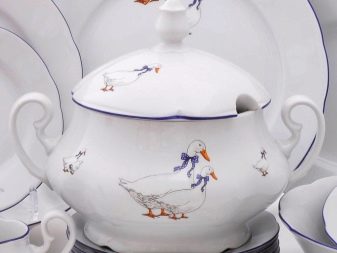
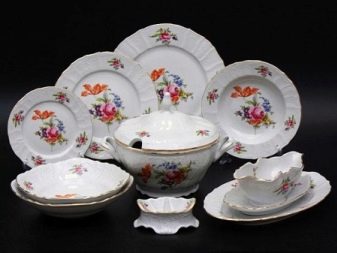
Bernadotte
A well-known Czech brand owned by the Thun factory. It is under this trademark that porcelain dishes with patterned relief are produced. The cutlery from this factory, which is produced in Karlovy Vary, has a characteristic thickened edge. The line includes milky white and ivory porcelain sets. Traditional collections:
- Madonna;
- "Green Flower";
- "Geese";
- "Blue Eye";
- Onion Pattern.
Thanks to a special technology that creates a thickened edge of plates, cups, saucers and other components of the table setting, the dishes are not prone to chipping and are durable. The services of this brand are suitable for everyday use and for ceremonial table setting.

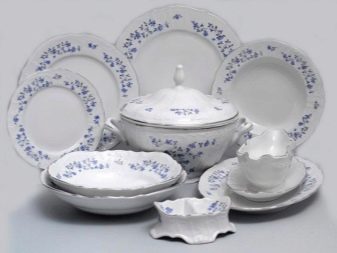
CONSTANCE
Thun Constance offers a large number of collections:
- "Geese";
- "Gray Rose";
- Cobalt mesh;
- "Rose mother-of-pearl";
- "Golden Rose of Cabal", etc.
This tableware is distinguished by refinement and grace of form, variety of decors and high aesthetic characteristics.
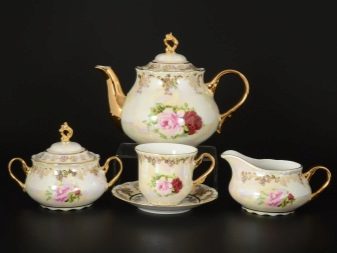

Triumph
This factory offers status services made from bone china. Fine white or ivory porcelain is finished in 750 18K gold. Such sets are of the ceremonial type, they are used at protocol events or by very rich people.


Thun-1974
It is a young brand of Czech porcelain, offering products in the neoclassical style. Its laconic decor emphasizes the beauty of Czech porcelain. The green leaves of lily of the valley look especially impressive on a white background. 4 "porcelain" factories operate under this brand, one of which belongs to the Klasterec-Thun company.
It is the largest Czech manufacturer of porcelain tableware, founded in 2009. It was the Thun trademark that created the famous services "Constance", "Nicole" and "Opal". After World War II, the plant became part of the Karlovsky Porcelain industrial group.
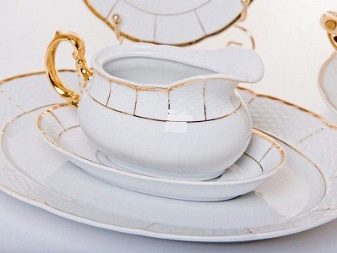
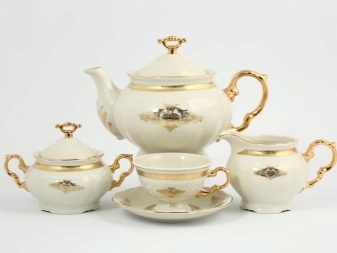
Concordia Lesov
One of the oldest factories in the Czech Republic for the production of porcelain dishes. It was organized in 1888. Today it is part of the Karlovsky Porcelain concern and produces the famous Bernadotte Baroque-style sets decorated with a bas-relief.
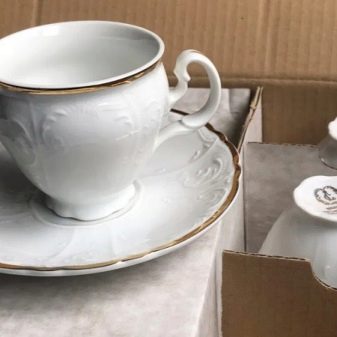
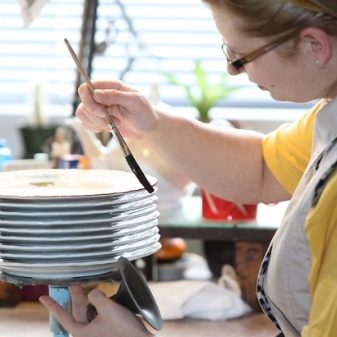
Other
The Moritz Zdekauer company is also famous for its quality tableware. It produces various lines of porcelain sets, including those for children. In addition to kits with geese, the company offers one-off items in a similar style. Thanks to this approach, each customer will be able to create their own original version of the famous service with Bohemian geese.
Leander, which is famous for its original technology for the production of such dishes (based on temperature differences), can be attributed to well-known manufacturers. As a result, the products are extremely strong and durable.
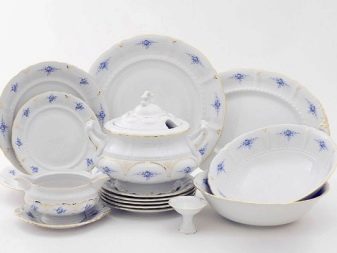
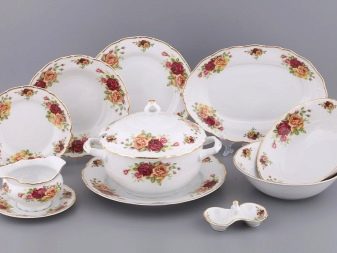
How to choose?
Due to the great popularity of this material and its affordable price, often unscrupulous manufacturers release a huge number of fakes, which differ not only in low artistic characteristics, but also in the dangerous composition of the porcelain itself. In order not to buy a fake, you need to purchase such dishes only in company stores that work directly with Czech manufacturers. You also need to learn to understand the brands that porcelain factories put on their products.
It is also not worth it to be sold at too low a cost, since a real Czech service - although cheaper than its English, German and French counterparts - cannot be sold at bargain prices.
Another sign of natural Czech porcelain is the branded packaging of the services, which prevents items from breaking during transportation.
